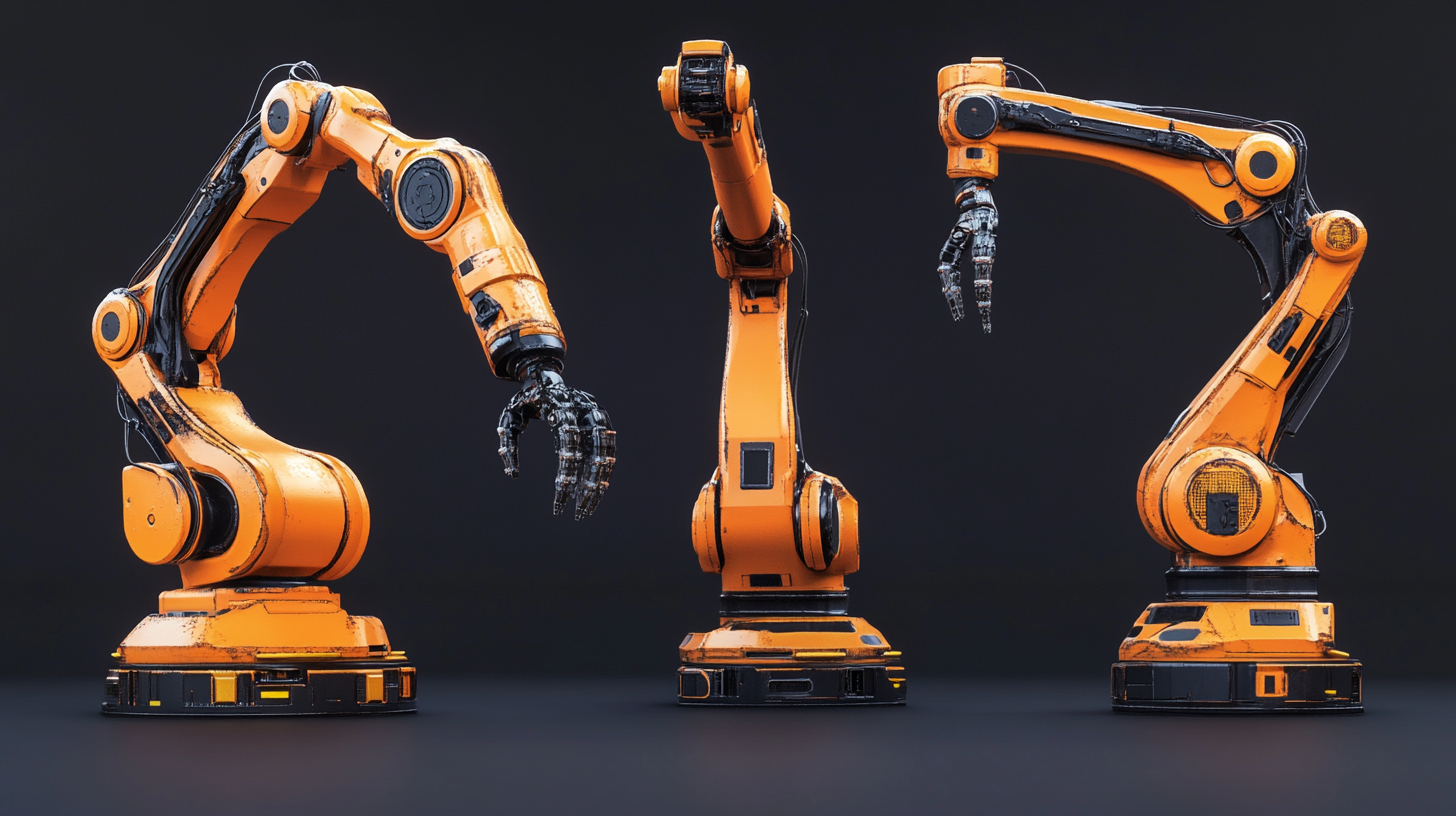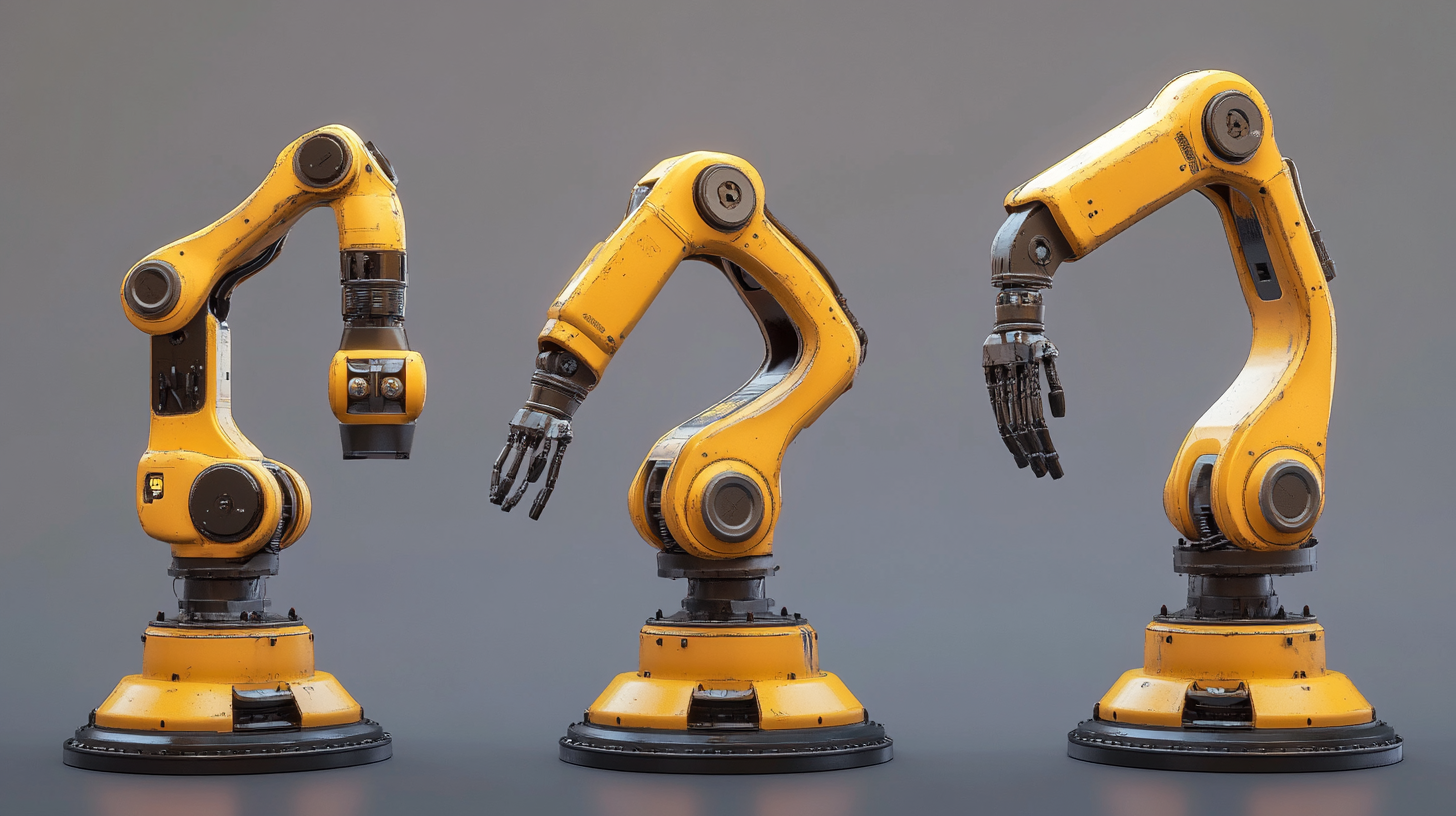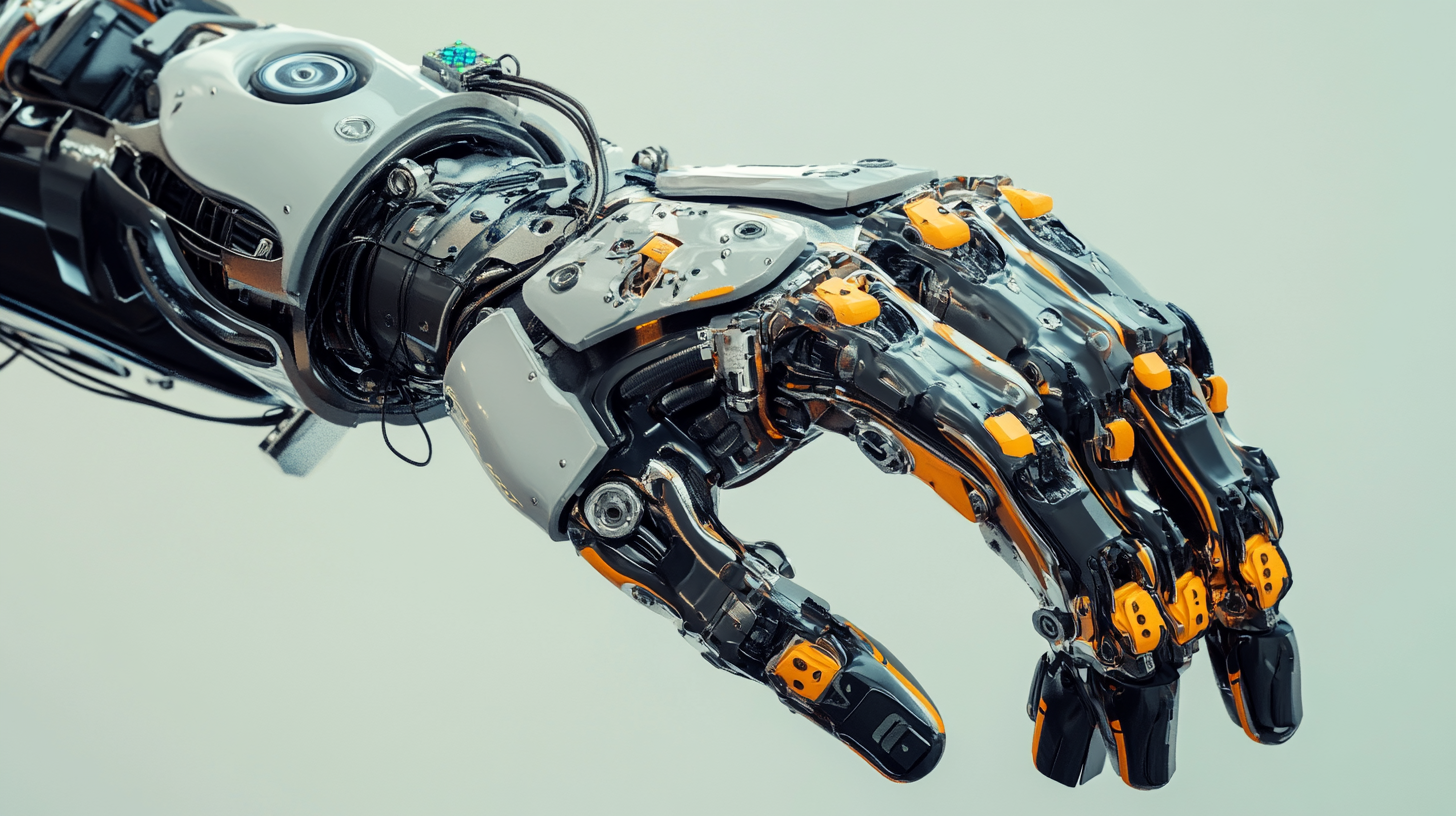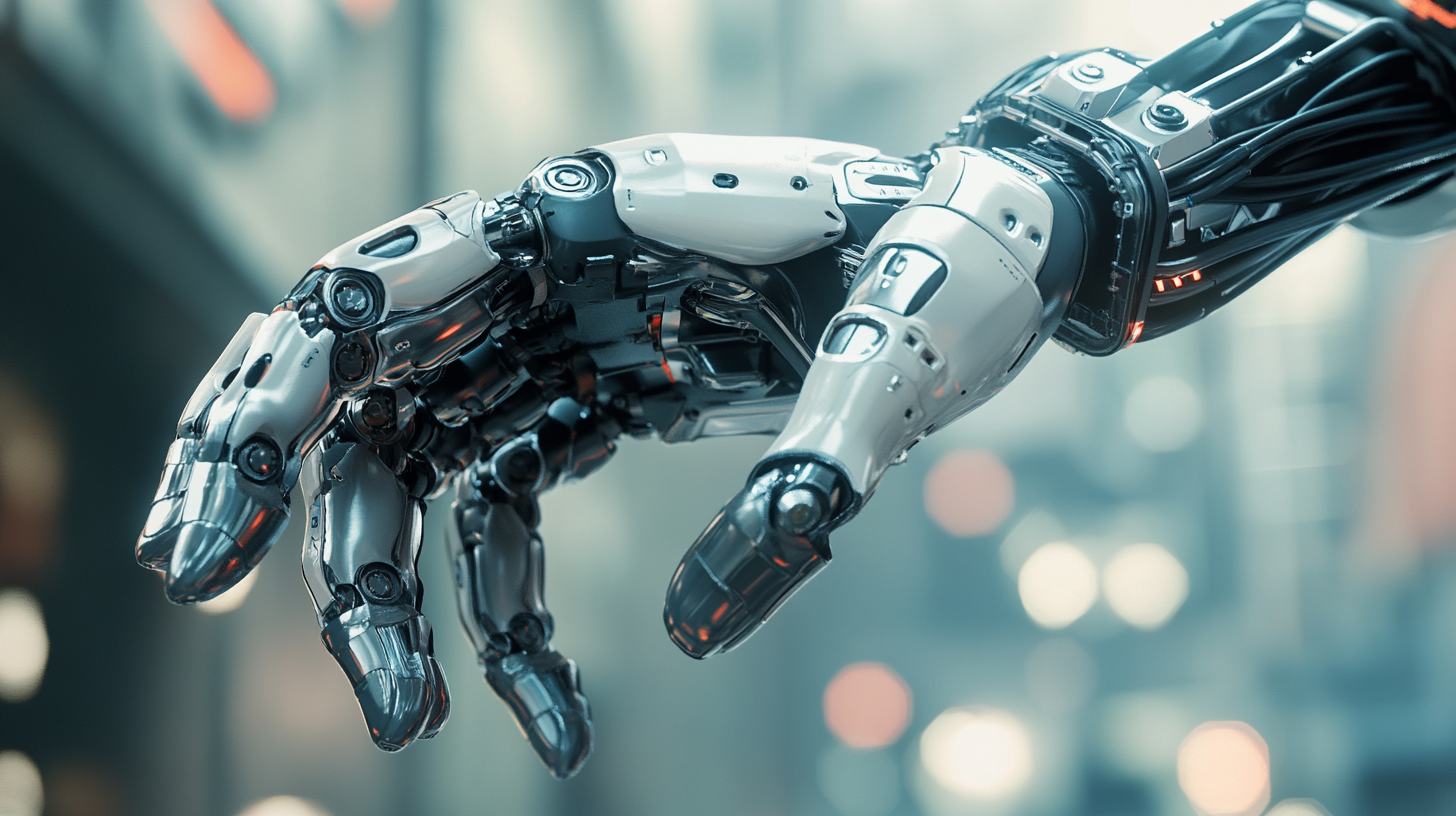Use it to plan your own robot barista payback period.

Want to know more details?
Please, contact your manager.
Aleksandr Maksimovich
Business Development Manager
Nalarobot Robotics | Nalarobot Café
Mobile: +375 333 760 460
(WhatsApp | Telegram | Viber)
BLOG
Understanding the Features and Applications of Various Industrial Robot Arms
The last few years have been in the shadow of the ramp-up in the adoption of Industrial Robot Arms, with the latest technology innovations and the burgeoning demand of the industrial spread in automation. The global industrial robot market is expected to reach $41.7 billion by 2025, as per a recent international Federation of Robotics report. It will show how extensively automated the world has become nowadays. This is, of course, true for the field of manufacturing. With this, Industrial Robot Arms are not only increasing productivity but making it very precise and decreasing operational costs.
With the change in industries, so does the different tracks Industrial Robot Arms could take ranging from assembly lines to aiding in a complex surgery procedure in healthcare facilities. The current estimated total number of operating industrial robots all over the world amounts to around 3 million, as stated in the World Robotics Report, which shows how indispensable these robotic systems play a role in modern industries at this time. An exploration of the different features and applications of industrial robot arms will be captured in this blog, laying bare how their contributions to the manufacturing process are changing the entire dimension of automation.

Key Types of Industrial Robot Arms and Their Unique Capabilities
Indispensable instruments for the industrial sector, these robot arms have entered almost every other part of industry, to phenomenal gains productivity, precision, and efficiency. Knowing the key-have types for distinct capabilities is a fundamental requirement to the industries that want to optimize their operations. Ibid., and according to a report published by the International Federation of Robotics (IFR), the number of active industrial robots in the world in grown into 3 million in the year 2021, which was a 13% increase from the previous year. Growth has grown to rate. Articulated robots are one of the most common industrial robot arms. These robotic systems comprise multiple joints that offer a wide range of movements, just like a human arm. Their flexibility fits applications such as welding, painting, and assembly. According to research by MarketsandMarkets, the articulated robots market will be worth $31.5 billion by 2026, fueled by the automotive and electronics industries, which greatly depend on these robots for their high-speed operations as well as for conducting complex assembly processes. Furthermore, another famous one would include SCARA robots. These robots can flex in a horizontal axis. They can also be applied to high-velocity applications that call for extreme precision, such as assembly and packaging. According to Statista, SCARA robots are expected to see their market grow at a compound annual growth rate (CAGR) of more than 9% during 2021-2026. Their rapid completion of tasks while requiring little space makes them very popular in the manufacturing arena. Last but not the least, collaborative robots or cobots are most recently being introduced into industries and have ended up changing the way industries work. Collaborative robots have the ability to improve safety and productivity while not demanding strict security systems as it happens for heavy industries. As much from a report by Research and Markets, it predicts the cobot market to grow from a US $1.3 billion market in 2020 to US $12.3 billion by 2025. That increase is the reason for the upsurge in the adoption of cobots into small and medium-sized enterprises that want the use of automation with a human workforce. Indeed, collaborative robots cater to different industry needs with their specific features, ensuring their place in modern manufacturing and assembling lines.

Comparative Analysis of Industrial Robot Arms in Manufacturing Efficiency
The ushering of industrial robot arms into the scene has brought about rapid transformations in manufacturing in respect to efficiency. Their role is substantial in productivity enhancement and workflow optimization, as revealed by a comparative study on the different robot arms with respect to their acceptance in industrial automation. Such state-of-the-art robot arms possess modern high-tech features, like multi-modal functions, which entail using robots for assembly, painting, precision cutting, as well as many other activities streamlining operations across sectors.
Most of recent developments, especially those touching on embodied intelligence, have taken the capabilities of industrial robot arms a notch higher. It is no longer only repetitive tasks for which these machines can be programmed; this time around, they can perform complex tasks that call for decision-making. For example, a system in which there is an interface provides the opportunity for information to be processed and adjusted dynamically, enabling flexibility in operation through real-time as well as change in environment. This goes towards developed intelligence systems from pure automation, which presents to the surroundings and responds to what it senses, lastly improved efficiency in production process.
This is a sign of the importance of a well-engineered product in light of the advances achieved. Denotations such as load, arm reach, and accuracy are now becoming important benchmarks against which the capability of industrial robots are measured. Also newer developments have shown that companies have shifted focus to durability aspects with features like IP68 ratings- for dust and water resistant; machines can, thus, run in all sorts of environments without deteriorating power. Such innovations make way to a huge leap in the development towards an illusory future in which industrial robot arms not only make production fast but also make manufacturing environments smarter and more adaptive.

Real-World Applications of Robot Arms in Different Industrial Sectors
From automating assembly lines in the automotive sector to streamlining repetitive tasks like welding, painting, and assembly at with the highest precision, there isn't a sector that industrial robotic arms haven't practically reformed manufacturing processes. The example becomes clearer when looking at repetitive action from robotic arms such as welding, painting, assembling components, and even doing the aforementioned actions when it is not constructed by humans but rather through machines. Such processes not only speed up production, but they also improve safety since most hazardous procedures are worth performing through these machines rather than by humans.
In electronics, they are also very valuable with respect to assembling tiny, delicate parts. By taking little components into account and taking care of very intricate operations, robotic arms ensure that results are highly repeatable while reducing chances of error, thereby producing better quality products. Certainly, such flexibility allows the machines to be easily reprogrammed and configured quickly, a milestone in the ever-changing markets of electronics that demand fast response times.
The food and beverage industry is now using robotic arms to perform the packing and sorting work for it. This saves cultures and makes fewer human-to-human contacts in handling food, which contributes significantly to hygiene and the efficiency of food handling. For instance, pack perishables rapidly and accurately to meet stringent regulatory standards using robotic arms.
Even from manufacturing to food processing, robot arms optimize increases productivity and safety, and over time, as technology is improved, new applications for the robots are discovered every time, affecting more and more industries and introducing new techniques in the ways conventional industries are handling production.

Impact of Robot Arms on Workplace Safety and Productivity Metrics
The application of robotic arms into production and assembly lines has greatly changed the safety and productivity of workplaces. One of the usage benefits of robot arms is that it can minimize the risk of injuries in the workplace. This robotic equipment can work with hazardous materials and perform same-function assignments that render a danger to human operators. By letting robots do dangerous jobs, companies can minimize the chances of accidents and create a safer work environment.
The effects of robot arms can hardly be overstated on productivity metrics. The robot solutions offer precision and a high degree of consistency beyond what can be managed by human workers for extensive periods of time. With its ability to work day and night compared to the need for breaks in between, the robot arms would operate at maximum capacity, which means higher product output and reduced production time. This increased production would help companies address the pressures from burgeoning demands and spend less on costs of operation.
Moreover, the firm can also place human resources on strategizing and other complexities requiring creative thinking and solving problems where robot arms would supplement tasks. Therefore, this would not only bring job satisfaction but improve the innovative capacity of the firm. It's a symbiosis in which the co-existence between robots and humans balances safety and productivity indicators.
Future Trends in Industrial Robot Arms: Automation and AI Integration
Automation and AI have been incorporated in the revolutionary process of industrial robot arms. The recent report of International Federation of Robotics (IFR) stated that the global market for industrial robots will reach $70 billion by 2026, with an estimated CAGR of 10%. Advancement in AI technologies has allowed for the flexible and efficient performance of robots in difficult tasks. Therefore, this huge growth is due to AI.
Robot arms can do more than monotonously repetitious program tasks. These robot arms have machine-learning capabilities that allow them to learn from their environment and, therefore, improve their own functioning over time. According to McKinsey & Company, manufacturers applying AI in their processes can actualize productivity increments of 40%. The knowledge of robot arms to analyze information in real-time provides an opportunity for predictive maintenance and improving operational uptime, which are very essential in today's fast-paced production channel.
Future trends will see the industry shift toward collaborative robots, or cobots, that actively work with human operators. According to ABI Research, the cobot segment is expected to grow from $710 million in 2020 to greater than $2.8 billion by 2025. This AI incorporation will not just ensure safety and better productivity but also module better flexibility for the manufacturing lines to adopt increasing customization in production. The integration of AI into industrial robot arms has huge implications for productivity, safety, and operational excellence, thus creating an era of smart manufacturing.
